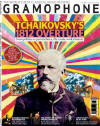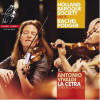Texte paru dans: / Appeared in:
*

GRAMOPHONE (08/2012)
Pour s'abonner /
Subscription information
Channel Classics
CCSSA33412

0723385334125 (ID234)
Reviewer: Duncan Druce
Podger in Holland
for the 1727 ‘La Cetra’ set
La cetra (‘The Lyre’) was
published in Amsterdam in 1727, dedicated to the Austrian emperor, Charles
VI. (Confusingly, another manuscript set of 12 concertos, from the following
year and likewise dedicated to Charles, are also called La cetra.)
The familiar ingredients of Vivaldi’s concerto style are well established by
this stage in his career; there are perhaps two or three concertos where the
elements are put together in a rather superficial way but the set as a whole
demonstrates Vivaldi’s remarkable ability to find continually renewed
inspiration in writing for solo violin with string orchestra. (Just one
work, No 9 in B flat, a spirited, airy double violin concerto, changes the
setting.) My particular favourites are No 3, with its elaborate orchestral
tuttis in the outer movements, No 5, which has an unusual, tempestuous
character, the serious minded No 8, with its elaborate, sonorous writing for
strings, and, perhaps best of all, the last concerto in B minor. One of two
in which the solo violin plays scordatura (with non-standard tuning), it’s
notable for its attractive melody and continual inventiveness. A few years
ago I was impressed, listening to the Holland Baroque Society’s disc of
music by Georg Muffat, directed by Matthew Halls (A/08), by their youthful
verve. With Rachel Podger in charge, their enthusiasm is undimmed, and
there’s a wholehearted commitment to projecting the character of each
movement and to articulating the shape of every phrase. Even what might seem
to be mundane accompaniment figures have an expressive nuance that gives
positive support of the solo line. Podger plays with her customary beauty of
tone, purity of timing and lively variety of articulation. Her melodic
decorations in the slow movements give a delightfully unforced, spontaneous
impression. The performances take a few liberties. I love the way that at
the start of the First Concerto, the repeated chord pattern is extended
backwards, providing a sort of ‘young person’s guide to the basso continuo’,
as organ, harpsichord, double bass and guitar enter one by one. And Podger’s
elaboration of the chordal introduction to the Fifth Concerto immediately
establishes the work’s dramatic character. I’m not so sure about what sounds
like a mandolin obbligato in the Largo of the Second Concerto (or is it just
harpsichord?). It’s a delightful sound but draws attention away from the
violin melody. Still, these are brilliant, energetic performances, full of
genuine Vivaldian spirit and excitement.
Fermer la fenêtre/Close window
Cliquez l'un ou l'autre
bouton pour découvrir bien d'autres critiques de CD
Click either button for many other reviews


